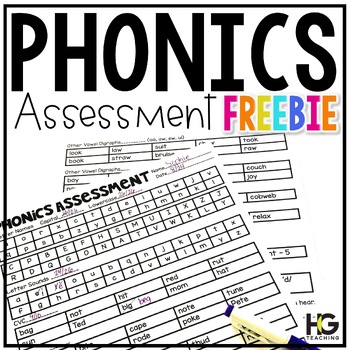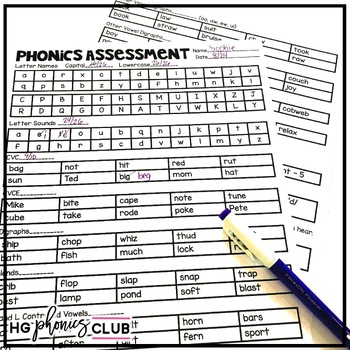- PDF
Description
This phonics assessment is quick and easy. It’s the perfect tool for identifying phonetic needs and strengths so that you can plan targeted and effective small group Science of Reading aligned lessons and activities.
Includes the following skills:
•letter names
•letter sounds
•cvc
•cvce
•digraphs
•blends
•r and l controlled vowels
•long vowel digraphs
•other vowel digraphs (oo,zaw,ew,ui)
•other vowel digraphs (oi, oy, ou, ow)
•closed syllables
•open syllables
There is a short phonemic awareness section that includes the following:
•How many sounds in the given word?
•Given the individual sounds, what is the word?
•Students are given the word. They must say each individual sound.
Tips and Tricks
1. Every child WILL NOT complete the entire assessment. When a child begins to struggle… STOP! The goal is for you to know where you need to begin instruction. If a child struggles with cvc words, you know that is where you need to begin. So there will be no need to move on to vowel teams, etc.
2. Complete the phonetic awareness section with every child. There’s only a few sections, but it’s a great tool for determining if students are able to hear and manipulate the individual sounds in words.
3. The first two pages are for the teacher. I like to print front/back so that I have everything in one place. The second two pages are for the student. I only make one copy and use it with every child.
- Follow me on Instagram for a glimpse of life inside my classroom.
- Follow my blog for weekly tips, trick, and ideas to engage your little learners.



